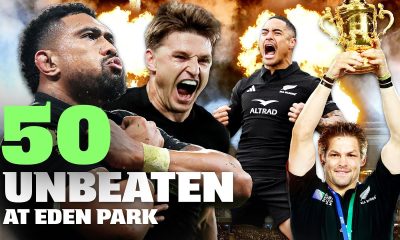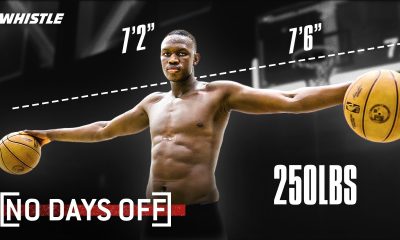Michael Brauner is a Senior Sports Analyst and Contributing Writer for Yellowhammer News. You can follow him on Twitter @MBraunerWNSP and hear him every weekday morning from 6 to 9 a.m. on “The Opening Kickoff” on WNSP-FM 105.5, available free online.
NIL
When Derek Jeter made MLB All

Nobody bats 1.000? Try telling that to Derek Jeter.
In 2000, the 26-year-old New York Yankee was already an All-Star and two-time World Series champion. The kid from Kalamazoo, Michigan, had come up quickly, suddenly possessing the leverage to turn down $100 million contracts and screen calls from singer Mariah Carey.
No one man should have all that power, but Jeter did, and he looked good doing it. The shortstop oozing with quiet cool had both the Bronx and Manhattan on lock, eyeing over seven-figure offers not just from owner George Steinbrenner but also from Madison Avenue.
The combination of major market, championship play, and youthful – yet professional – poise was enough for an at-bat that went far beyond baseball in representing sports icon Michael Jordan.
“It was the opportunity to be the premier baseball player on the Jordan Brand,” Excel Sports Management’s Casey Close, Jeter’s longtime agent, told Andscape. “It represented success and the highest end of the elite. It had Derek stand out from a lot of the other players.”
Not just a lot of players, but the entirety of Major League Baseball.

STEVE SCHAEFER/AFP via Getty Images
Related Story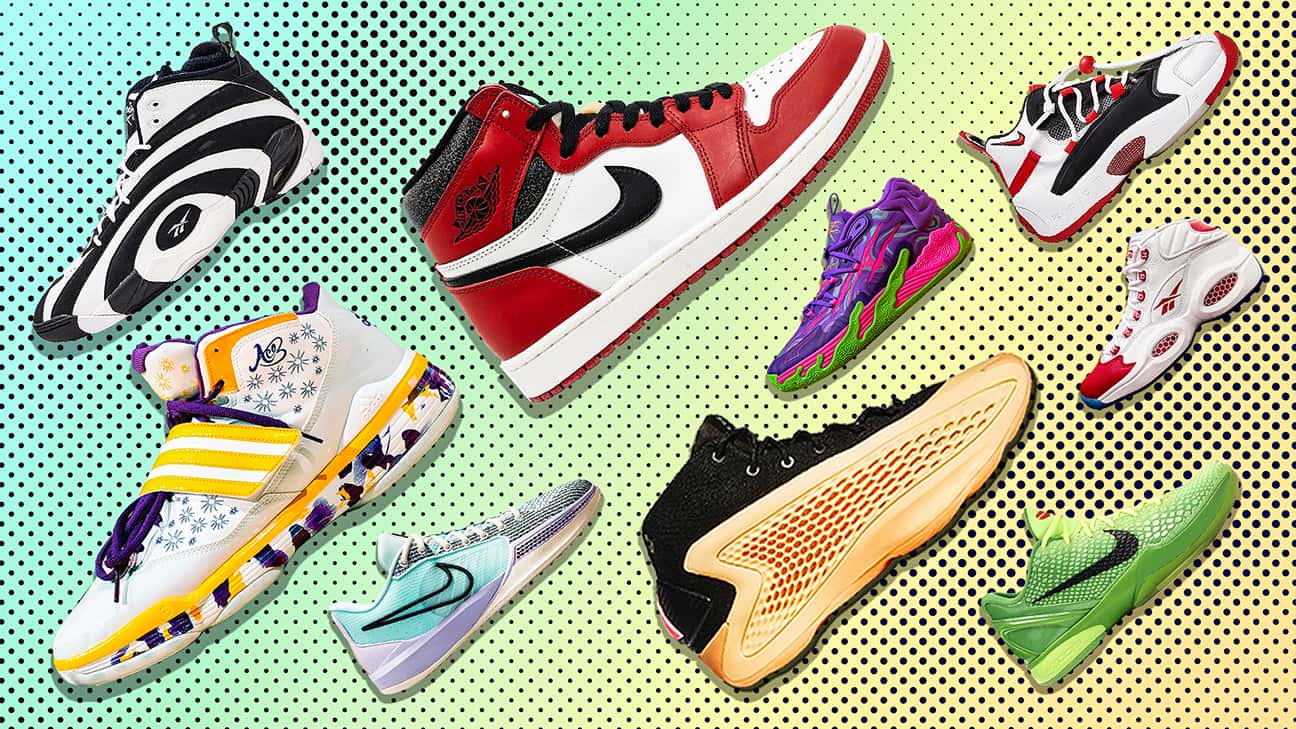 A sneakerhead’s dream: Dive into the all-time Signature Sneaker DatabaseRead now
A sneakerhead’s dream: Dive into the all-time Signature Sneaker DatabaseRead now
Jordan sneakers as baseball cleats were not common in 1999 when they signed Jeter — they were non-existent. When Jordan signed Jeter that spring, the strange seeds were planted to extend Jordan Brand’s reach in new arenas.
Carrying a historic franchise on his back and setting the path for a retooled sportswear empire through his feet, Jeter arrived at the 2000 MLB All-Star Game, set in this year’s host city of Atlanta, as the kid who couldn’t miss but still had much to prove.
Jeter did his part by becoming the first New York Yankee to win MVP at the midseason classic. More covertly, he ushered in a new era of Jordan Brand where rocking retros wasn’t strictly reserved for the NBA hardwood or high school hallways.
“The biggest challenge was that in baseball you can’t wear the shoes that the player wears on field to the classroom,” Close said of soles that included cleats or spikes. “That was the only hurdle we needed to adapt to.”
Related Story ‘The Godfather of the Jordan Brand’: How Howard White found his calling as Michael Jordan’s closest confidantRead now
‘The Godfather of the Jordan Brand’: How Howard White found his calling as Michael Jordan’s closest confidantRead now
Finding a through-line in Jordan’s back-to-school release calendar and baseball’s summer spectacle, Jeter took the plate in a player-exclusive take on the “Infrared” Air Jordan 6, adding Jeter’s No. 2 to the trademark tongue and replacing the illuminated Air sole with that of a black base and silver spikes.
“That moment helped set the tone for what cleated performance could look like when fused with iconic design,” a Jordan Brand spokesperson told Andscape.
The masses may have missed the big swing by Jeter and Jordan in the days of standard-definition television, but it broadcast a wave of where baseball, culture, and commerce would all shine in high definition.
See, Michael Jordan and Derek Jeter did not meet in a Beaverton, Oregon, Nike boardroom or at a Hamptons holiday party. Instead, the two 14-time All-Stars crossed on the dusty diamonds of Scottsdale, Arizona, chasing ground balls and the dreams of getting called up to the big leagues.
“I played with [Jeter] in fall ball in Arizona,” Jordan recalled in 2014, reflecting on his 1994 minor league baseball sabbatical and his brief stint with the Scottsdale Scorpions. “I was fascinated with the way that he played. Just by watching the way he carried himself you could see he was good from a very early age.”

Jonathan Daniel/Getty Images
At the time, Jordan’s life was in transition with his footwear business on the fritz. Nike Basketball – a category built around Jordan – saw its sneaker revenue fall 22% in 1994. Forecasts were so dire that Jordan was forced to fund his own guarantee with Nike just to maintain the marketing dollars he believed were necessary to keep his signature series alive.
“I said I’d fund my own guarantee if they would commit enough marketing dollars to allow the brand to expand,” Jordan said about that time for “Driven From Within,” an autobiography released in 2006. “So I funded my own guarantee in the last contract I signed – for 30 years.”
As the Birmingham Barons outfielder batted .202 in Air Jordan 9 cleats – one-of-ones at the time – baseball, basketball and business appeared a losing situation for Jordan and Nike. When rounding the bases and approaching Jeter, it was unlikely the fresh-faced kid touting Tampa had any idea of the sneaker strife Jordan was experiencing outside of the diamond.
“I was 19 years old and I had just won Minor League Player of the Year,” Jeter recalled during an appearance on the Drink Champs podcast in 2022. “Michael’s on second base and the first thing he said to me was, ‘What’s up DJ?’ From that point forward? He always looked out for me.”
Related Story On his 60th birthday, 23 little-known sneaker stories about Michael JordanRead now
On his 60th birthday, 23 little-known sneaker stories about Michael JordanRead now
As Jordan looked out, things looked up. Crossing paths in humble circumstances soon led to bright light glory in divergent directions. Just two years after meeting, Jeter was voted the unanimous American League Rookie of the Year in 1996, helping the Bronx Bombers win their first World Series since 1978.
Heading back to basketball, Jordan kept pace with Jeter, capping a historic 72-10 season with his fourth NBA Championship and reviving his footwear franchise at Nike and, in turn, birthing the Jordan Brand in 1997.
Each Scottsdale standout had the world in their hands, but by 1999, Jordan would again leave basketball behind. Would business slump again, or could he pass the baton to an outside suitor?
“They kept in close contact,” Close said. “As Jordan Brand expanded, they got into baseball. Who else but Derek Jeter?”

Jamie Squire/Allsport

SPX/Ron Vesely Photography via Getty Images
As a footwear free agent thanks to a severed signature deal with Fila, Jeter was tasked with filling the shoes of the greatest athlete endorser of all time. The first season, he filled those shoes quite literally by playing in a cleated version of the Air Jordan 14 – a personalized pair almost identical in color blocking to the retail release famously worn by MJ for his “Last Shot,” a game-winning basket for the Bulls in Game 6 of the NBA Finals against the Utah Jazz in 1998.
By being the only MLB athlete anointed as the “Air Apparent,” Jeter’s cultural cache within the league skyrocketed, even if CEO Jordan was still struggling to sell shoes in his second retirement.
“There were a ton of baseball players who were wearing Jordan when they weren’t playing baseball,” Close said. “So to see this line come into the field and the clubhouse? It was very exciting for all the players.”
Exciting and worthy of envy. Heading into Atlanta’s All-Star Weekend in 2000, both championship jewelry and MLB jersey sales placed Jeter as baseball’s most marketable player. However, that didn’t make the Jeter-Jordan partnership a guaranteed home run. Then-Seattle Mariners star Alex Rodriguez was selected the American League starter at shortstop over Jeter, and Air Jordans were falling out of favor, reportedly down 42% entering the new century at its lowest showing ever.
As is often the case for Jeter and Jordan, the stars would align as the pressure mounted. A concussion kept Rodriguez out of the All-Star Game, while a pivot to tapping the nostalgia fountain signaled new life for Air Jordan.

Rich Pilling/MLB via Getty Images
In the fall of 2000, the Air Jordan 6 “Infrared” was slated to return as a retro release for the first time, aiming to expand the heritage of the teetering Nike subsidiary. Rather than retell the story of Jordan debuting said shoe in the 1991 NBA All-Star Game through hardwood ambassadors, they leaned on Jeter to breathe new life into the old shoe.
Perhaps, they breathed new life into Jeter, too.
Making good on a bad All-Star outing the year before, Jeter seized the moment in Atlanta, batting 1.000 by going 3-for-3 with two RBIs. With a Louisville Slugger in his hands and unreleased Jordans on his feet, he doubled off Randy Johnson, caught Kevin Brown through the middle for a single, and capped it with a line drive off Al Leiter.
“Three-for-three, a great night,” MLB commissioner Bud Selig said, congratulating Jeter on winning MVP. “And I’m told the first New York Yankee to ever win this award.”
The momentous outing would add to Jeter’s Yankees lore, claiming a trophy not even Babe Ruth, Joe DiMaggio or Reggie Jackson held. Additionally, it elevated Jeter as someone Jordan could count on in big stages. This would prove true months later as Jeter’s hot hitting would not just warm up Jordan’s back-to-school sneaker but baseball’s biggest event.
“Most people remember that as his signature All-Star performance,” Close said. “But he followed it up in the 2000 Subway Series by being the World Series MVP. 2000 was a very special year for Derek and the Jordan Brand as well.”

ANDREW SAVULICH / NEW YORK DAILY NEWS / AFP) (Photo by ANDREW SAVULICH/NEW YORK DAILY NEWS/AFP via Getty Images
Special indeed, as the always-ahead-of-schedule Jeter bested the crosstown Mets in Air Jordan 11 PE Cleats – once again paving the way for “Concord” and “Space Jam” holiday releases that entirely ignited the Jordan Brand we know today.
Twenty-five years later, to say Jeter popularized retro Jordans is a reach. However, to say Jordan made his biggest bet as a young CEO on a kid he met in minor league fall ball is emphatically true. It was also a good one.
As an ambassador, Jeter would go on to have a signature line with Jordan Brand, appearing in multiple ad campaigns, releasing various retro renditions, and winning five World Series and five Gold Glove awards in total.
The “Infrared” footwear donned by the 2000 MLB All-Star Game MVP may have been a rarity 25 years ago, but it’s the norm now. In 2025’s Atlanta exhibition, five Jordan Brand athletes will lace up basketball-inspired cleats, with two of them being Yankees.
“We’re seeing a cultural shift where performance and personality are inseparable,” Jordan Brand shared via a statement to Andscape. “The future of baseball is bold, expressive, and Jumpman-led. We’re just getting started.”
It’s an impressive feat for a once-fledgling company now tracking toward $10 billion in annual revenue, still gaining ground in an evolving sport once secluded in tradition, yet now expanding at the seams.
“A lot of the players wanted to wear it,” Close said, looking back on Jeter’s All-Star Air Jordan moment. “It was a very unique situation at the time.”

NIL
Hunter Yurachek dishes on ‘new financial commitments’ for Arkansas football
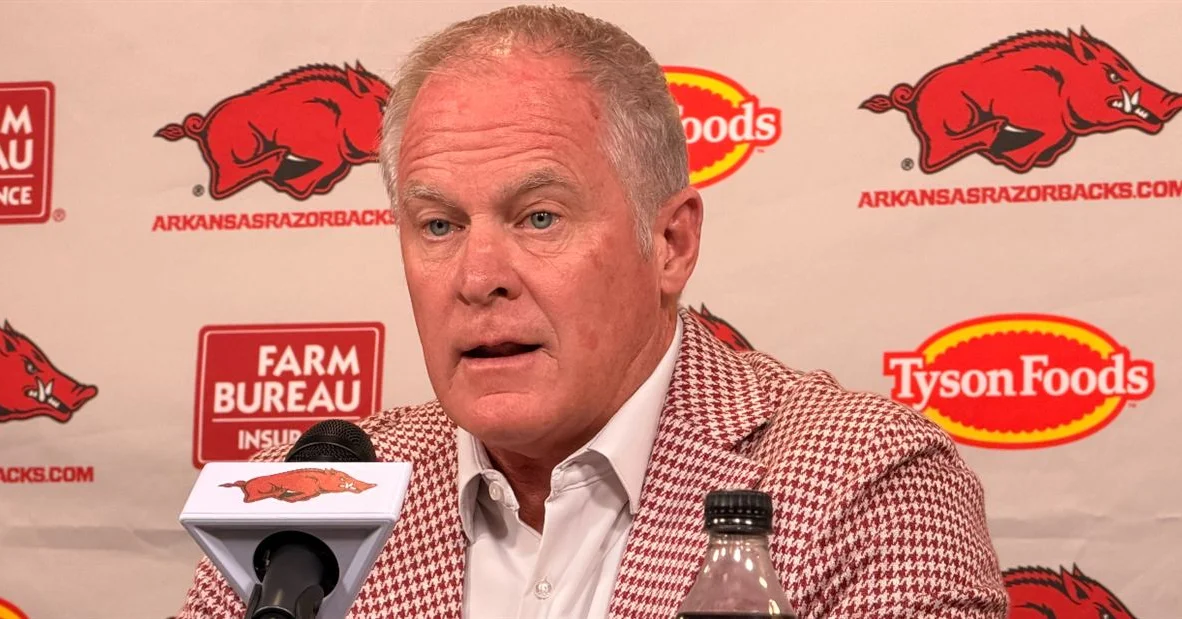
Arkansas vice chancellor and director of athletics Hunter Yurachek formally introduced Ryan Silverfield as the 35th coach in the football program’s history on Thursday afternoon to assembled media in the Broyles Center. As part of the hour-long introductory press conference, Yurachek answered a plethora of questions regarding the financial support surrounding the football program.
Back in September, following the Sam Pittman’s dismissal after six seasons as coach, Yurachek admitted that the football program didn’t have the necessary funding to compete with the majority of SEC programs in football. At the time, he seemed optimistic that would change in lock-step with a new coaching hire.
As part of his opening statement on Thursday, Yurachek revealed the funding has indeed improved. The goal is to build a championship program at Arkansas and, as Yurachek put it, this new commitment was the first step in the process of accomplishing that goal.
“The top-down alignment of a new financial commitment from our Board of Trustees, the University, the department of athletics and so many generous donors that have taken place over the last several weeks was the first step to us being all in on this goal,” Yurachek said. “This financial commitment will push us to the top half in key SEC items such as our assistant coaches pool, our strength and conditioning staff, our support staff pool and our talent acquisition through revenue sharing and legitimate NIL.”
Yurachek was peppered with questions regarding this ‘new financial commitment’ but wouldn’t divulge any specifics on the budget or amount of newly committed funds, citing a competitive advantage as the reason not to. He did, however, say the investment was “significant.”
“I think it’s our competitive advantage not to give details of what that is other than to tell you that it is a significant investment in all aspects of our football program,” Yurachek said. “That will move us to the top half of spending in all of those categories I mentioned in the Southeastern Conference.
“I don’t believe we need to be at the top of spending, we need to be somewhere where we’re really competitive and Ryan and I are on the same page with where we are. It allows him to go out and hire the assistant coaches that he believes he needs to hire to build a championship program and to invest in our revenue sharing and legitimate NIL to make sure that we acquire the best talent for our roster.
“I want to make sure that we have a competitive advantage. I think once you put your financials out there and tell other schools what you’re doing, that allows them the opportunity to come meet you where you are or exceed where you’re at.”
While the financial commitment is improved according to Yurachek, he also revealed they’re still not to the level they want to be from a fundraising standpoint. He explained that the program is off to a good start with the last few months, but they still haven’t accomplished their goal.
“We’re not to the finish line, but I will tell you from a fundraising standpoint, we’re off to a great start,” Yurachek said. “With the athletic department is going to commit is significant and that’s how we’re going to reallocate some of the dollars that we have. The board is going to make a commitment to our football program as well, and all of that is significant. I don’t want to tie down a specific dollar amount to any of that, because I don’t want to limit what we can do
a couple of different revenue sources that we’re looking through, both through our foundation and through the athletic department, and then just how we reallocate money that we’re currently spending within our department, whether that’s from a salary standpoint, an operational standpoint, but we feel like we can do some things differently to be more efficient, that we can reallocate more dollars to our football program.
Yurachek explained that some of the financial commitment from the athletic department will come from reallocation of what they’re currently spending. He mentioned salaries, operations and that there are other ways they can be more efficient which helps push more money toward football.
When asked how fans will be able to notice the new financial commitment behind the football program, Yurachek pointed to Silverfield’s recruiting and staff additions among other things.
“It will come when he announces some of the people on his staff, that will be the first piece,” Yurachek said. “Then when you see how our roster comes together after the transfer portal officially opens in January, you see we’ve got a couple of young men in here (Quincy Rhodes and KJ Jackson) that are coming back. That’s a part of the financial commitment that we’ve made into our football program, to be able to retain those high-caliber, very talented young men.”
It’s not just Yurachek and his staff helping get Arkansas football in better financial shape. Silverfield himself has hit the ground running in that department and has made a difference in just a matter of days. Yurachek shared a story of the new Razorbacks head coach leaving quite the impression on one donor at Thursday’s basketball game.
“Let me touch on his fundraising prowess,” Yurachek said of Silverfield. “He doesn’t even know this yet. He was in the courtside club last night, and he was doing what he does in building relationships with donors. Right off the bat, he walked away from one donor, the donor came up to me and committed to a seven figure gift to a football program, just with a brief five minute encounter.”
NIL
New Arkansas coach Ryan Silverfield says it won’t take long to rebuild the program

FAYETTEVILLE, Ark. (AP) — Ryan Silverfield had a second stop to make Thursday after his first press conference since being hired as Arkansas football coach.
He had to face the people he needs to win over, the ones the Razorbacks need to increase their spending so they can compete with the SEC’s power programs.
Silverfield signed a five-year, $33.5 million deal to take over in Arkansas earlier in the week. He had coached Memphis since the 2020 season, plus a single game with the Tigers as interim head coach in 2019. Memphis qualified for a bowl in every season with Silverfield at the helm and peaked in 2024 with an 11-2 record. The Tigers hold an 8-4 record ahead of a likely bowl game.
Those kinds of results at Arkansas would be a boon. The Razorbacks’ season concluded Saturday with a loss to Missouri. That ended a 2-10 season with an 0-8 record in the Southeastern Conference, the third season in the last seven Arkansas finished with those marks.
“This program is built on pride, resilience and toughness, and it’s time to bring it all back,” Silverfield said at the press conference. “Being all in together, we will rebuild it, we will earn it, and we will make this state proud.”
Finances were one of the biggest points in both the press conference and the public introduction a few hours later. Arkansas athletic director Hunter Yurachek has made a point for the last year that the Razorbacks need more contributions for NIL funds in order to compete at a higher level in the SEC. The first audible announcement over the loudspeaker before Silverfield took the dais was one asking for money.
NIL war chests are tight-lipped secrets across college football. But Arkansas’ football attendance, which equates to revenue earned, ranks fifth from the bottom in the SEC. Both Silverfield and Yurachek said finances were a key topic during the interview and contract negotiations.
“I think it’s our competitive advantage not to give details of what that is, other than to tell you that it is a significant investment in all aspects of our football program that will move us to the top half of spending in all of those categories I mentioned in the Southeastern Conference,” Yurachek said. “I don’t believe we need to be at the top of spending. We need to be somewhere where we’re really competitive and Ryan and I are on the same page with where we are.”
Quarterback KJ Jackson and defensive end Quincy Rhoads Jr. both joined the press conference and announced they would return to the team in 2026. Jackson, a rising sophomore, took over as Arkansas’ starting quarterback for the final game of the season and is largely considered the future of the position. Rhoads finished in a tie for fifth in the SEC in sacks (8) and second in the league in tackles for-loss (17 1/2).
Silverfield told fans he doesn’t think a rebuild will take long.
“It’s not one of those things where we’re sitting here saying, ‘Hey, you know, Hunter, I need three years to rebuild this,’” Silverfield said. “No. We can start rebuilding the culture the moment we step down.”
___
Get poll alerts and updates on the AP Top 25 throughout the season. Sign up here and here (AP News mobile app). AP college football: https://apnews.com/hub/ap-top-25-college-football-poll and https://apnews.com/hub/college-football
NIL
Mitch Barnhart emphatically affirms Kentucky football’s NIL status – Kentucky Kernel
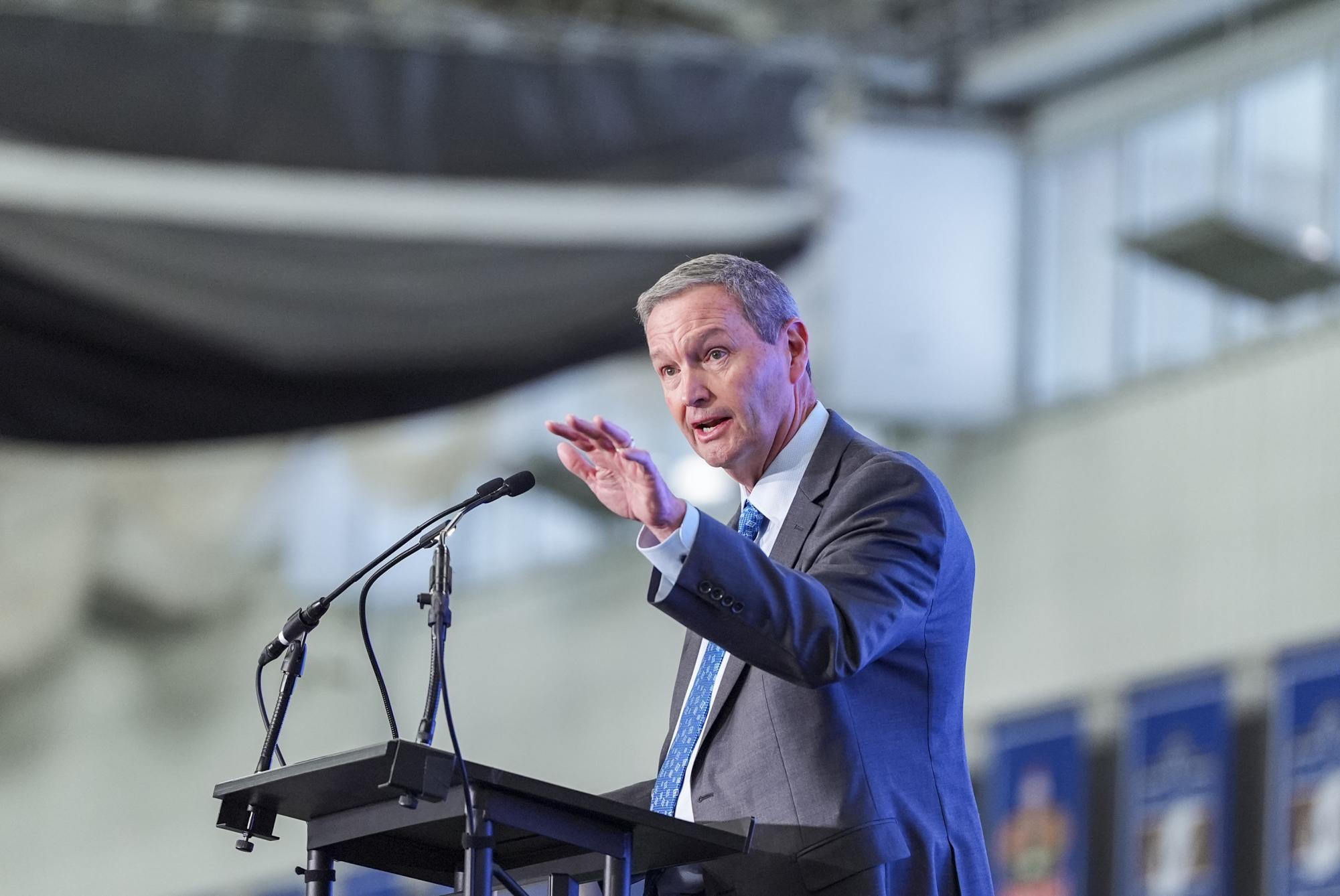
A new era of Kentucky football was celebrated yesterday as Will Stein was introduced as head coach and spoke to fans along with media for the first time.
As expected, NIL came up in this conference as it is the talking point of college sports all around the country.
The new head coach was the first to confirm that Kentucky is where it needs to be to compete for the players it wants under the new leadership.
“Yeah, of course, of course,” Stein said. “Mitch [Barnhart], Mark [Hill] laid out a great plan. Feel like we’re right there to be successful right away.”
To help navigate this process, it is believed that Pat Biondo will be joining the staff as a general manager.
The role has started to become more integrated into the sport in this rising world of NIL in order to have experts at the forefront of this process for recruiting and roster-building purposes.
Barnhart spoke with media after the introductory press conference and doubled-down on Stein’s take about NIL for the program in a fired response.
“We’re confident in what we’re doing and people ask that question 19 different ways, from all the stuff that’s been going on, and it’s exhausting. You know, enough, enough about have we got enough? We’ve got enough, and we’re working at it just like everyone else is working at it We’re no different,” Barnhart exclaimed. “They’ve got Learfield, we’ve got JMI, they’ve got Learfield, they’ve got playflight. So this notion that we don’t have enough is ridiculous. We’ve got enough.”
Another avenue that has caused several debates on NIL is the salary cap that limited the amount schools could directly share to athletes at $20.5 million.
This was meant to limit the amount schools could give players and sounds good in principle, but like most things when it comes to NIL, did not work that way.
A lot of schools have used deals outside the school that has inflated the money within college football programs well above the limit.
Some schools have even incorporated and expanded athletic departments into agency to secure the deals for these players that bend the rules just a bit.
Another major issue is that schools are making NIL promises part of recruitment for high schools players and transfers.
Within the given timeframe, there is nothing wrong with this, but since NIL, teams have been known to reach out to players when they are not allowed to.
This tampering expedited the process for getting Stein to Lexington to become the Wildcats next head coach.
“Make no mistake about it, we can talk about tampering, we can talk about no doing this, no doing that, they’re flat calling players all over the place, and there’s player movement everywhere,” Barnhart said. “So let’s not kid ourselves, so, yeah, to protect our roster, to protect our program, to protect recruiting, we had to move fast.”
However, while others might be not playing the rules and finding workarounds, that is not going to happen at Kentucky.
“We’ve got to resource it the right way. We got to assess talent the right way. We got to acquire it the right way. We’ve got to make sure we’re within the boundaries and the rules,” Barnhart said. “We’re not going to break the rules. That’s flat out. We’re not doing that alright, we will do it the right way. We don’t need to, we don’t need to do that. We’re good enough at what we do. We’ve got good people.”
With National Signing Day over and the transfer portal opening in January, it will not take long to see just how well Stein and Kentucky can compete with the rest of the SEC to recruit talent in this NIL era.
NIL
Vanderbilt QB Diego Pavia pleads to Trump for College Football Playoff executive order
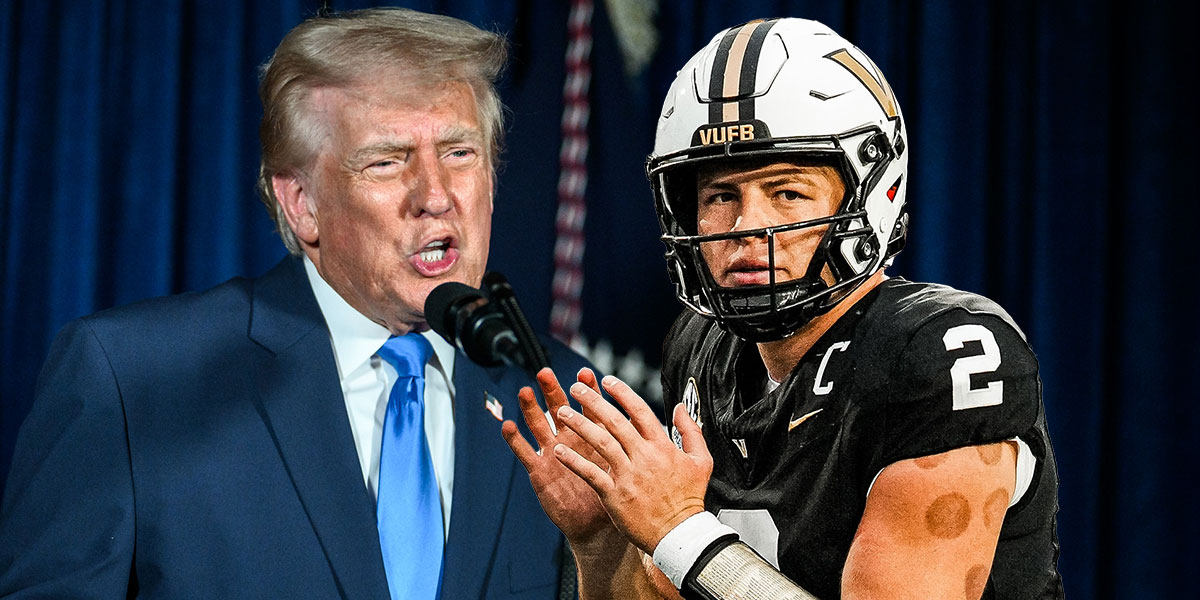
College football has had incredible developments over the last several years, from NIL deals, to the expanded college football playoff and everything in between, so much so that it’s led to more government involvement in the sport than ever before.
Not to mention, the transfer portal process became such an issue that President Donald J. Trump tried several methods to help the greater good of the game, including signing executive orders and encouraging Congress to come up with solutions.
Though, the latest request of the President comes from one of college football’s biggest stars.
Upon the release of the latest College Football Playoff rankings just days before the final reveal of the field, the Vanderbilt Commodores — who are 10-2 with losses to Alabama and Texas — came in at No. 14 with no real path to move into the 12-team field.
Commodores’ quarterback Diego Pavia — who will likely be a Heisman Trophy finalist — has pleaded with Trump to sign an executive order that would expand the field to 16 teams, allowing four from the SEC to be guaranteed, along with four at-large bids.
Needless to say, Pavia’s request is not going to get approved, but it does reflect the current chaos college football finds itself in when star players are openly begging the President to do something about a flawed system.
Whether Pavia’s in the playoffs or not, he and Vanderbilt have been one of the best stories in the nation this year, and he has made huge contributions to college football.
NIL
Ron Hart: Lane Kiffin and the art of the Irish exit
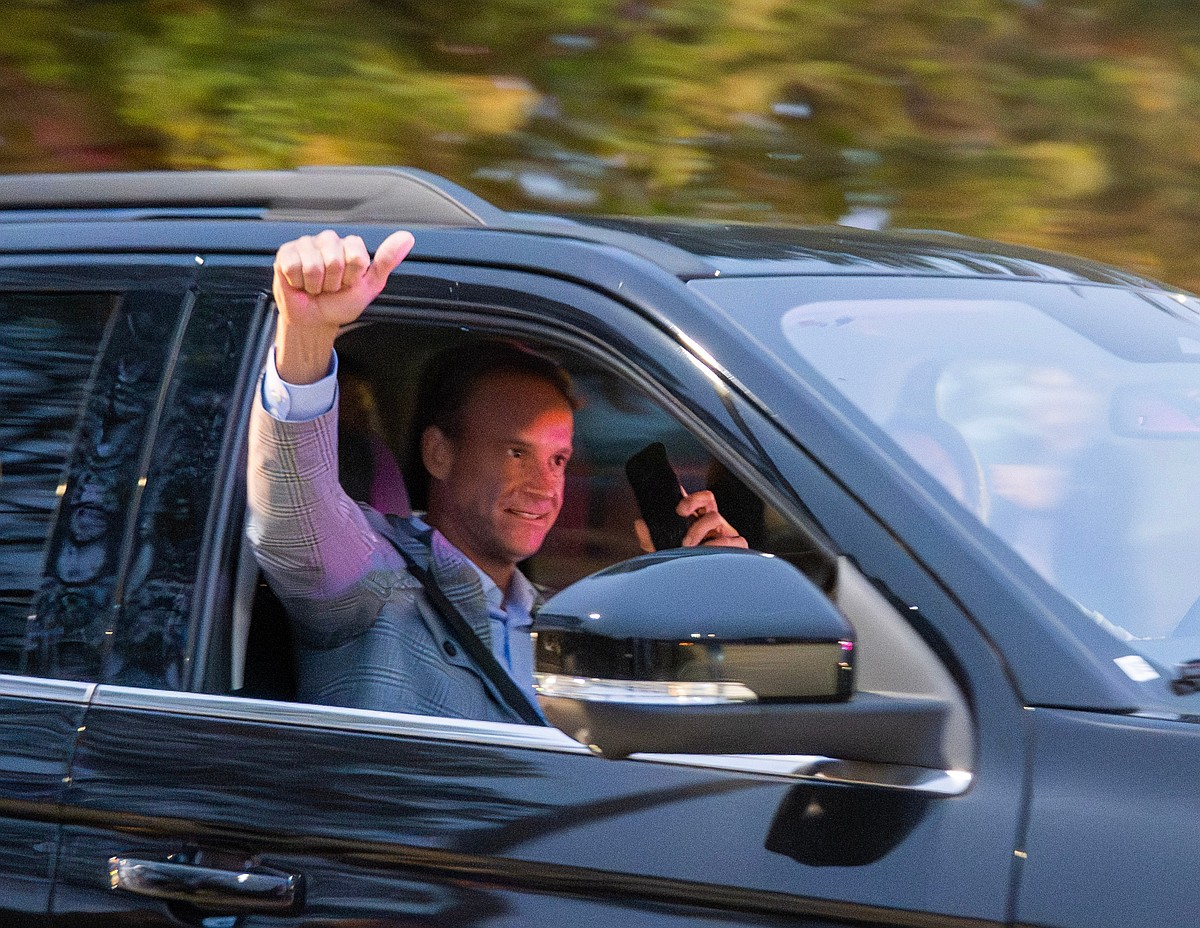
Like most Southerners, I love SEC football. A girlfriend broke up with me once over it — we dated just two seasons. She told me I loved college football more than her. To try to make her less upset, I told her I loved her more than ice hockey.
Ohio State is the team to beat this year, but the SEC is always in the mix. College football appeared right after the Civil War to give Southern and Northern states a safer way to keep on fighting.
Let me say up front that I like Lane Kiffin. I went to basketball schools, so I can be a fair arbiter here.
(IN THE NEWS: Lane Kiffin exits Ole Miss for LSU; Pete Golding takes over for Rebels)
Kiffin is one of a few head coaches with a sense of humor. He gives an interesting interview beyond the superficial platitudes most have been taught to spew. In leagues where coaches speak in measured tones of “process” and “culture,” he will push back and poke, all with a wry smile. He channels Coach Mike Leach, who was the greatest.
Kiffin wins, but loyal he is not. Some coaches build dynasties; he builds frequent flyer miles. He is the coach colleges love to hate. He feeds on it. He does not care. I like that.
The worst form of thinkers, the NCAA, politicians and college presidents, have designed the current NIL/college football landscape. These people who are used to making bad decisions with other people’s money have created a convoluted mess.
Jimmy Sexton, the “coach’s agent” who has a virtual monopoly in the space, owns these colleges. With his $80 million coach buy-outs paid by colleges with tuition going up at twice the rate of inflation, I’m surprised some state has not pursued an antitrust case against him.
Lane left for LSU, where he might find a home. Louisiana has a long history of rogues and reprobates, and not just in politics. Sixty percent of Louisiana is under water, the other 40% is under indictment.
Without an in-state rival to turn him in, and in the rough and tumble nature of Louisiana, Kiffin might thrive. The last LSU coach, Brian Kelly, left for health reasons. Fans were sick of him.
Kiffin’s decision to move, he said, relied on his former boss, Nick Saban. He once described Saban as “like an ex” in a divorce settlement. The man is a conundrum wrapped in a kerfuffle.
(IN THE NEWS: Ole Miss loses coach but moves up a spot in College Football Playoff rankings)
His departure from Ole Miss was a masterpiece of awkward timing, as the team was preparing for the College Football Playoff. As the fan base wailed in betrayal, Kiffin asked if he could coach in the playoffs. Talk about your haughty toddy! Ole Miss said no. As he left Ole Miss in a jet, he told several assistant coaches to get on the plane with him now or no job. Baller move. Five went.
LSU will take its place in this year’s playoff as it has recently: on the couch watching it.
A winning coach can name his terms. UNC signed Bill Belichick with the agreement that his girlfriend would be given a snap bid to pledge Chi Omega and live in the sorority house. Sadly, Belichick’s first loss was 73 to 22, calling even more attention to the relationship.
SEC football is a big deal. Trump attended the Georgia vs. Alabama game. Vanderbilt would not let Trump come for fear he would deport their QB, Diego Pavia. Maybe it would be covered on ESPN Deportes?
Amid the chaos, Vanderbilt has been on the rise. Their coach stayed; they flipped the No. 1 QB commitment from Georgia. Vanderbilt hopes to build the kind of football team their women’s bowling team can be proud of.
Football might be the “bread and circus” of our times. It goes beyond North and South, state versus state. It’s a religious experience. I always told my kids that an atheist is a person who watches Notre Dame play Southern Methodist and doesn’t care who wins.
Contact Ron Hart, a syndicated op-ed satirist, author and TV/radio commentator, at Ron@RonaldHart.com or X @RonaldHart.
NIL
How Much Kalani Sitake Turned Down From Penn State to Stay at BYU

Earlier this week, it appeared that Kalani Sitake might be the next coach at Penn State. Instead, he opted to remain at his alma mater BYU, as it prepares to face Texas Tech for the Big 12 championship. If the Cougars win Saturday’s game at AT&T Stadium, they will punch their ticket to the College Football Playoff.
“If I’m being honest, I just wanted to be here a long [time],” Sitake said after announcing his extension at BYU, his alma mater. “… It’s hard to leave when you have something so special and you have amazing people that support us.”
The decision came after an outpouring of support from the BYU community, which Sitake’s wife referred to as a “love bomb.” The monied parties around the Cougars program evidently mobilized as well, with Crumbl Cookies CEO Jason McGowan tweeting Monday that it was “time for me to get off the sidelines and get to work” as the Sitake/Penn State situation was unfolding.
Now we have an idea of what the finances behind Sitake’s decision looked like. In a Thursday story on the recruiting battle between BYU and Penn State, Richard Johnson of CBS Sports reported that the contract offer from Penn State that the veteran coach rebuffed was “north of $10 million per year,” more than double Sitake’s pre-extension estimated BYU salary of around $4 million per year.
“Sitake’s extension at BYU is set to make him the highest paid coach in the Big 12 besides Colorado’s Deion Sanders, who makes $10.8 million on average,” Johnson reports.
Pete Nakos of On3 reported Tuesday that Sitake is expected to take home between $9 million and $9.5 million per year from BYU, with an additional $10–$15 million in NIL payments committed to the football program on top of the school’s slice of program revenue sharing. Schools are currently allowed to distribute up to $20.5 million to athletes across all spots for the academic year, though NIL outside NIL payments on top of that total are permitted.
SI College Football Newsletter. Get SI’s College Football Newsletter. dark. FREE
Sitake, a native of Tonga, played fullback at BYU in 1994 and, after an LDS mission, from ‘97 to 2000 under legendary Cougars coach LaVell Edwards. After a brief NFL stint, he entered coaching in ‘01, handling defensive backs at Eastern Arizona. He returned the next year to BYU as a graduate assistant.
After stints on staff at Southern Utah, Utah and Oregon State, Sitake returned to his alma mater in 2016 as head coach. In a decade leading the Cougars, he is 83–44 with a 17–10 conference record since the program joined the Big 12 in 2023. The program is 22–3 (15–3) over the last two seasons, giving him his third and fourth 10-win seasons.
More College Football on Sports Illustrated
Listen to SI’s new college sports podcast, Others Receiving Votes, below or on Apple and Spotify. Watch the show on SI’s YouTube channel.
-
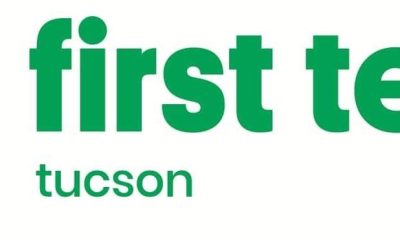
 Rec Sports2 weeks ago
Rec Sports2 weeks agoFirst Tee Winter Registration is open
-

 Rec Sports1 week ago
Rec Sports1 week agoFargo girl, 13, dies after collapsing during school basketball game – Grand Forks Herald
-
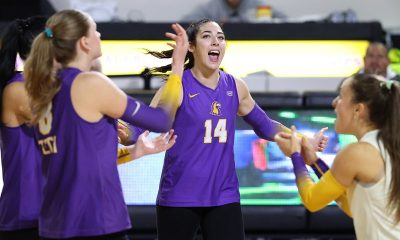
 Sports2 weeks ago
Sports2 weeks agoVolleyball Recaps – November 18
-

 Motorsports1 week ago
Motorsports1 week agoCPG Brands Like Allegra Are Betting on F1 for the First Time
-

 Motorsports2 weeks ago
Motorsports2 weeks agoF1 Las Vegas: Verstappen win, Norris and Piastri DQ tighten 2025 title fight
-
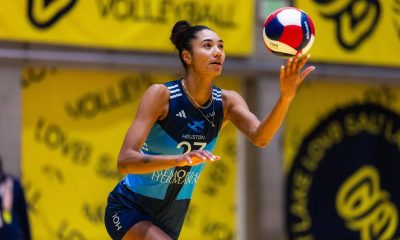
 Sports1 week ago
Sports1 week agoTwo Pro Volleyball Leagues Serve Up Plans for Minnesota Teams
-

 Sports1 week ago
Sports1 week agoUtah State Announces 2025-26 Indoor Track & Field Schedule
-

 Sports1 week ago
Sports1 week agoTexas volleyball vs Kentucky game score: Live SEC tournament updates
-
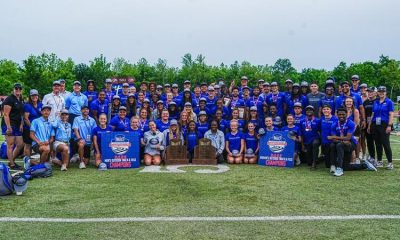
 Sports1 week ago
Sports1 week agoSycamores unveil 2026 track and field schedule
-
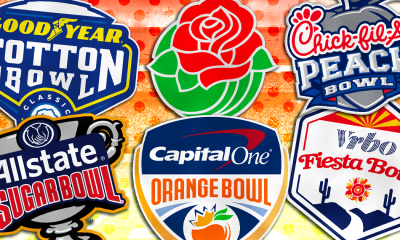
 NIL4 days ago
NIL4 days agoBowl Projections: ESPN predicts 12-team College Football Playoff bracket, full bowl slate after Week 14




